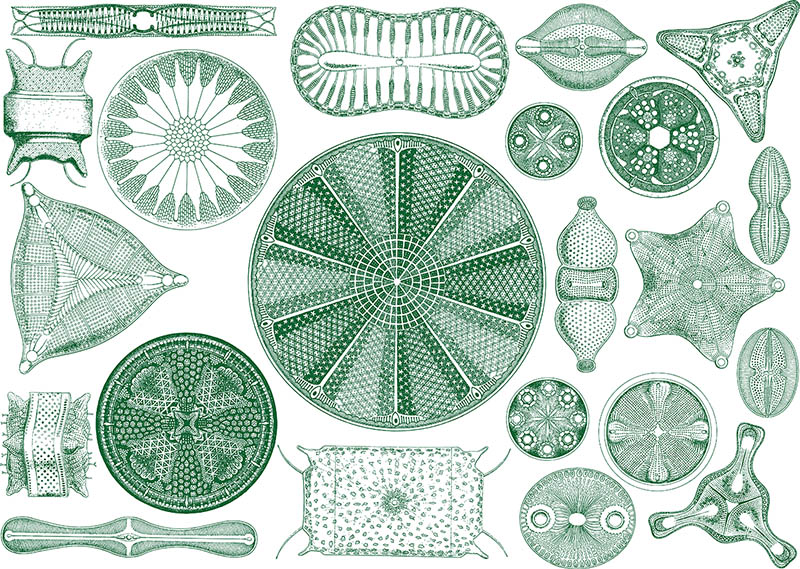April 12, 2022

There’s a special class of green algae that has the potential to revolutionize sustainability efforts. These so-called diatoms are abundant in nature and their structures could be used for environmentally friendly, high-value products, technologies to clean our air and new methods to purify our water. Furthermore, their residual biomass could become sources of green energy, reducing future carbon emissions.
But before we can reap the benefits of this type of circular sustainability, researchers need to know how to grow diatoms in large, controlled populations.

That’s where Mizzou Engineering’s Zhiqiang Hu comes in. Hu is an AAAS Fellow and William Andrew Davidson Professor in civil and environmental engineering, and he has a series of recent papers exploring the world-changing power of diatoms.
In his latest article, published in the journal Water Research, Hu and his recent PhD graduate, Yan Li, demonstrated how to produce customized diatom microstructures by varying a bioreactor operating parameter known as solids retention time, or SRT. SRT relates to the growth rate of microorganisms and impacts how substances are degraded in water.
By changing solids retention time, his team was able to alter characteristics of diatoms such as their shape and micro/nano pore size in order to optimize their properties, control their growth and mass produce them.
“Diatoms live naturally in the environment, but there’s no systematic way from an engineering approach to harvest them for large-scale controlled cultivation,” Hu said. “For the first time, we tried to show how using standard engineering operational practices — important parameters such as SRT — can make attainable structures that can be used for industrial and consumer products in the future.”
Hu stressed that there are a lot of uses for diatoms. One goal is to use them to design nano materials and nano devices. Last year, Hu and his team published a paper demonstrating how to transform these nanostructures into a metamaterial that removes trace amounts of pharmaceutical molecules from water, a growing problem in drinking water. These potential outcomes could fundamentally change our environment.
Diatoms also could be used in green technologies that remove existing carbon emissions from the air.
“In addition, the algae itself is viewed as an excellent candidate for carbon dioxide fixation and biofuels,” Hu said. “For example, we can use the residual biomass for anaerobic digestion, a process that occurs when microbes break down and produce biogas that could be captured for energy use.”
“This is why we do algae/diatom research, why we want to do significant studies to advance bioenergy and bioproduct technologies,” Hu said. “These green algae are important for high-value products as well as addressing global warming and climate change. They can help us get to a sustainable circular economy.”
Join our researchers and help change the world. Study civil and environmental engineering at Mizzou Engineering.